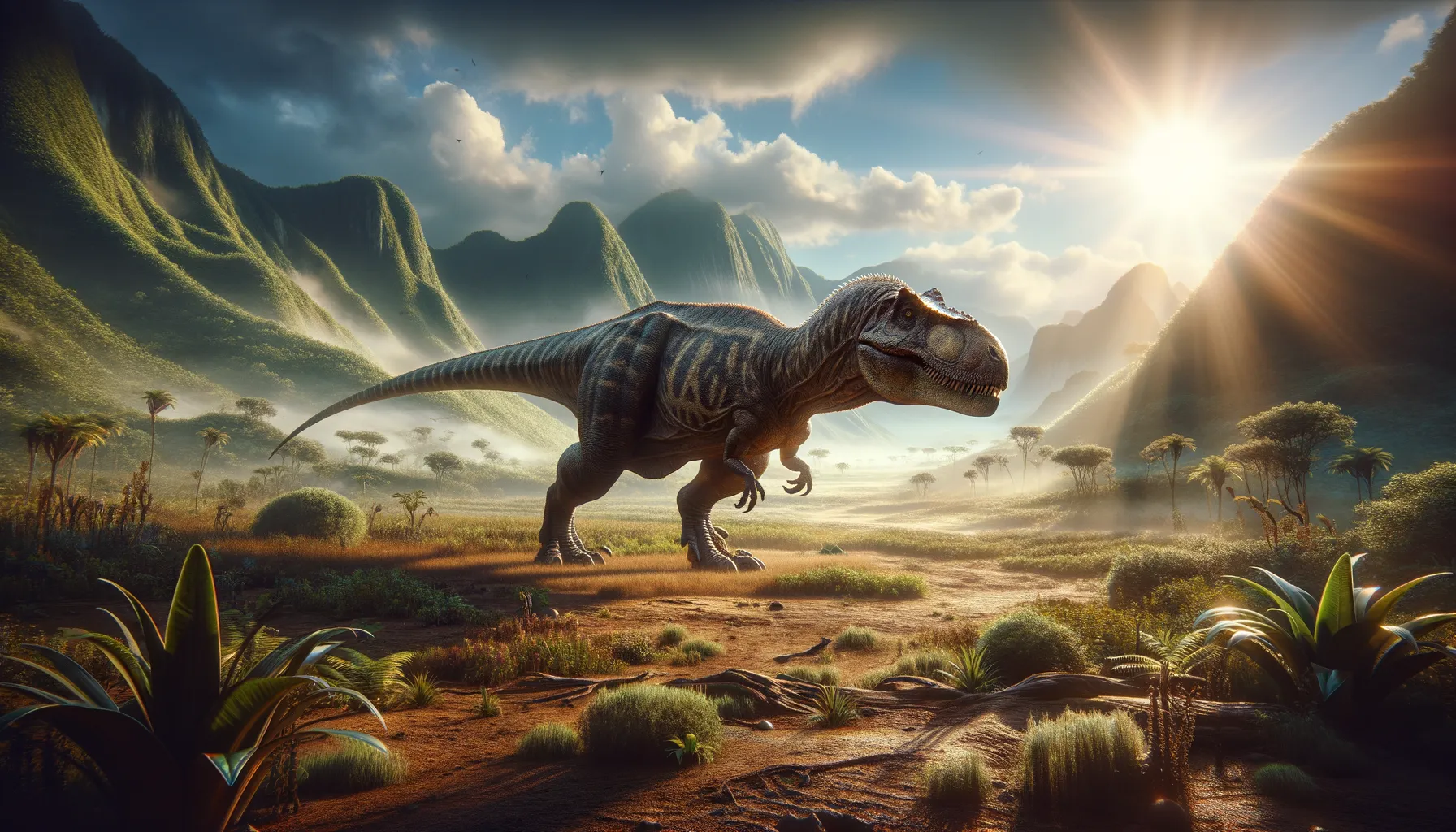
Yunxianosaurus
A gentle giant of the Cretaceous era.
Period
Cretaceous
Length
Could grow up to 30 feet in length.
Height
Stood approximately 10 feet tall.
Weight
Estimated to weigh around 1-2 tons.
Yunxianosaurus was an herbivorous dinosaur from the Cretaceous period, known for its large size and distinctive features. Although its complete range of characteristics remains somewhat obscure, it possessed traits typical of herbivorous dinosaurs. The discovery of its fossils in China has provided paleontologists with valuable insights into dinosaur diversity during its time.
Diet
Yunxianosaurus was an herbivore, feeding on a diet of plants and foliage. Its teeth and digestive system were adapted to processing tough plant material, aiding in its survival.
Hunting
As a herbivore, Yunxianosaurus did not hunt other animals. It primarily relied on foraging for plant matter to sustain itself.
Environmental challenges
Yunxianosaurus faced challenges from its environment, including fluctuations in climate and vegetation availability. Predation by larger carnivorous dinosaurs posed a constant threat, especially to younger individuals. Adapting to these challenges involved finding and maintaining safe feeding grounds and utilizing its size for protection.
Speed
Yunxianosaurus was likely slow-moving.
Lifespan
Its lifespan is poorly understood due to limited data.
First discovery
Discovered in the early 21st century in China.
Fun Facts
- Yunxianosaurus was a dinosaur that lived during the Cretaceous period, around 120 million years ago.
- Its fossils were discovered in what is now the Hunan Province in China.
- Yunxianosaurus was a theropod, meaning it was a two-legged carnivorous dinosaur similar to the famous Tyrannosaurus rex.
- Despite being a theropod, Yunxianosaurus was relatively small, measuring about 10 feet in length.
- It is believed that Yunxianosaurus had sharp teeth, which it used for eating meat, possibly hunting small prey or scavenging.
- The name Yunxianosaurus derives from 'Yunxian,' the region where it was discovered, and 'saurus,' meaning lizard.
- Fossils of Yunxianosaurus have contributed to our understanding of dinosaur diversity in Asia during the Cretaceous period.
Growth and Development
Yunxianosaurus likely experienced a relatively slow growth rate, typical of larger herbivores, reaching full maturity over several years. This slow growth would have been balanced by a potentially long lifespan, allowing it to reach its full massive size.
Habitat
The habitat of Yunxianosaurus consisted of lush forests and open plains, where it could graze on abundant plant life. Its surroundings were home to a diversity of other dinosaur species, creating a rich ecosystem.
Interaction with other species
Yunxianosaurus likely interacted with a range of other species, including both herbivorous companions and predators. Its size would have provided some defense against carnivorous threats, while social behaviors, such as moving in groups, might have offered additional protection.
Natural lifespan
Yunxianosaurus likely enjoyed a long natural lifespan, reaching several decades.
Reproduction
Reproduction in Yunxianosaurus probably involved egg-laying, with females protecting their nests from predators. Parental care could have included guarding hatchlings during the vulnerable early stages of life.
Social behaviour
Yunxianosaurus may have exhibited some social behavior, perhaps moving in herds for safety and to increase their efficiency in locating food sources. Social structures could have been loosely organized.
Fossil locations
Fossils of Yunxianosaurus have primarily been discovered in the Yunxian region of China, providing crucial information about its existence. These fossil sites offer insights into the geographic distribution and environmental conditions faced by this dinosaur.
